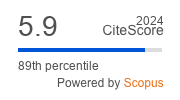Article | Open Access
Support for Businesses’ Use of Artificial Intelligence: Dynamics of Trust, Distrust, and Perceived Benefits
| Views: | 5525 | | | Downloads: | 7209 |
Abstract: Current research on AI has extensively examined drivers that predict individuals’ attitudes and behavioral intentions toward AI use. Despite this, there is limited research that explores factors that influence consumers’ acceptance of AI integration into businesses. As more businesses have integrated AI systems into different aspects of their operations, consumers have experienced increasing interactions with AI systems adopted by businesses. Thus, it is critical to understand not only whether individuals trust and accept the use of AI in their everyday lives, but also whether they trust and accept the use of AI by businesses they interact with. As such, this study tests a theoretical framework developed on the basis of current research on AI and technology acceptance. This study used a survey dataset collected from a nationally representative sample of 420 Australian consumers in 2024. The findings revealed that the interplay between faith in general technology, trust and distrust in businesses' AI use, and perceived AI benefits shaped attitudes and behavioral intentions toward businesses using AI. These dynamics also contributed to the approval of businesses’ use of AI. The findings offer theoretical and practical insights on how to manage these dynamics to foster positive attitudes and behavioral intentions toward businesses that use AI.
Keywords: artificial intelligence; consumers; distrust; faith in technology; perceived benefits; trust
Published:
Issue:
Vol 13 (2025): AI, Media, and People: The Changing Landscape of User Experiences and Behaviors
© Lisa Tam, Soojin Kim, Yi Gong. This is an open access article distributed under the terms of the Creative Commons Attribution 4.0 license (http://creativecommons.org/licenses/by/4.0), which permits any use, distribution, and reproduction of the work without further permission provided the original author(s) and source are credited.


